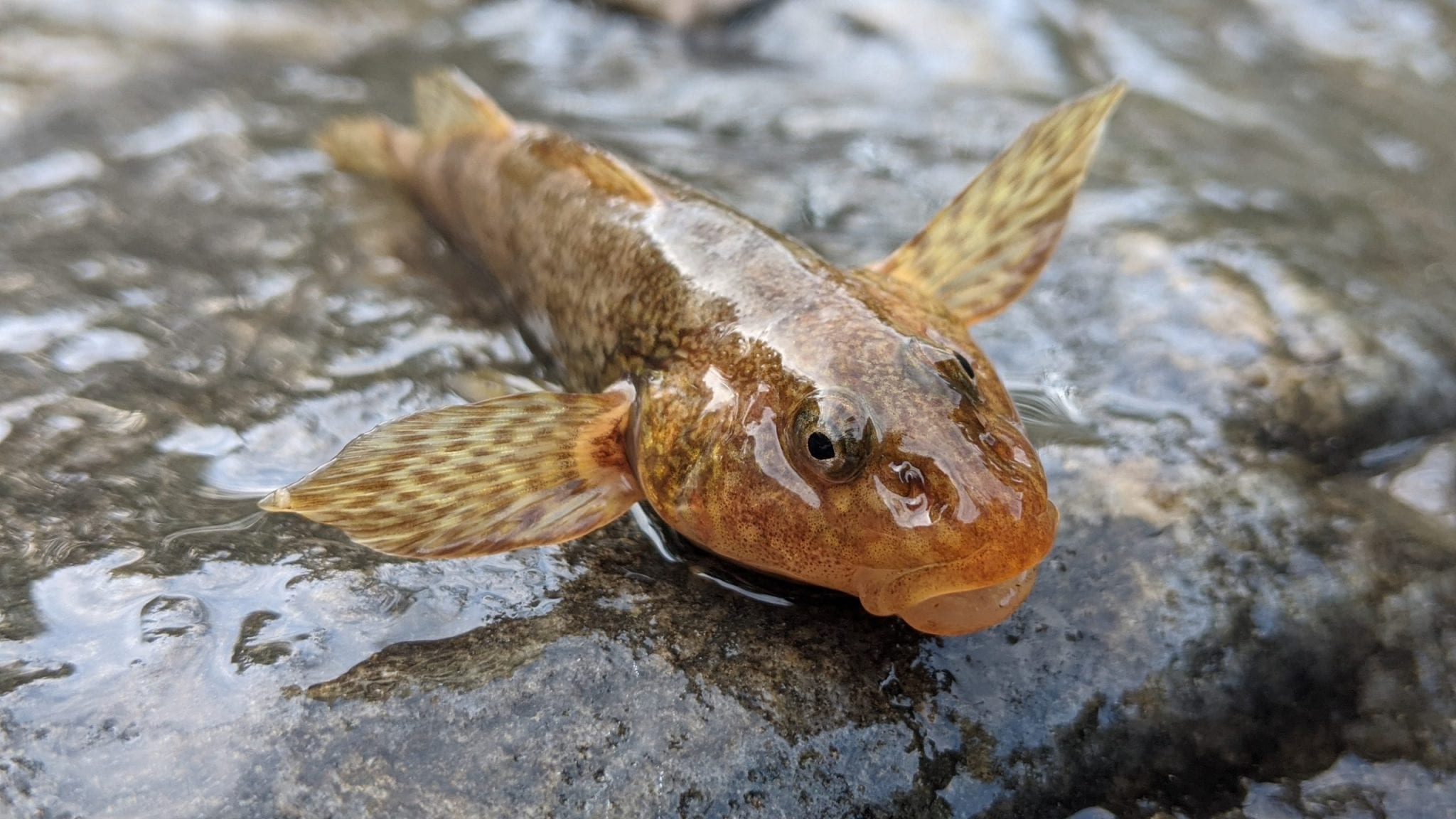Aqua Crisius Association, in partnership with the Carpathia Forest District, manages a number of river courses in the Făgăraș Mountains, including part of the Vâlsan River. Recently, ichthyologists certified the presence of Asprete – Romanian darter – (Romanichthys valsanicola), a fish considered virtually extinct in Romania. Excellent news for the Făgăraș Mountains and a positive impetus for nature conservation in Romania.
Asprete is considered one of the rarest fish in Europe, possibly in the world and is a living fossil of over 65 million years old, fully protected by law, as the species has been classified as critically endangered. The reconfirmation of its presence, in a relatively large number, after some periods in which it was considered even extinct, was a reason for joy for environmentalists and for all supporters of a natural balance.
“Asprete is a species that we currently know lives only in Vâlsan, along a short part of this river. In the past it inhabited Argeș and Doamnei rivers, from where it disappeared,” says Andrei Togor, Aqua Crisius coordinator. “It is a barometer for us humans, because it has reached the brink of extinction because of us. Fortunately, in the last two years the alpinist and conservationist Alex Găvan and his foundation have fought hard to stop the destruction and illegalities in the Vâlsan Valley and have drawn up a national action plan to save the species, a plan to be funded and implemented in the near future. I am also part of this team and we are working hard to make the project a real success for Asprete, for its living environment, and for the local communities located on the banks of the Vâlsan,” says Andrei Togor.
Even if asprete resembles other species such as the European bullhead (Cottus gobio) or the Gobio, a careful observer notices the presence of ctenoid scales on the body of this prehistoric fish (similar to perch), hence its name, being rough to the touch (asprete = aspru – translates into rough). The head is not as big as a European bullhead and not as flattened, and the eyes are placed on the sides of the head, they do not look upwards (see the comparative picture, taken from the volume Fauna RPR, P. Bănărescu 1964).
Restoring the balance of the area
For asprete, the biggest threat is the water level downstream of the Vâlsan dam, and the fragmentation from the riverbed within the locality of Brădetu that “crowds” the species in their lower area.
In addition to the threats posed by watercourses, another important factor with a negative impact on aquatic biodiversity is the forestry activity.
“For us, the rediscovery of asprete impels us to continue the ecological restoration works within the upper basin of the Vâlsan Valley,” says Mihai Zotta, conservation director of Conservation Carpathia.
“In the last two years, we have already managed to reforest over 200 hectares of land affected by illegal logging, 10-12 years ago, and we have rebuilt erosion ditches, stabilizing the soil, which no longer clogs the river causing increasing turbidity. Out of the total purchased area, we still have about 60 hectares to plant. But our initiative, without general support and direction towards a better balance in the Făgăraș Mountains, is only one example of good practice. What matters is what our downstream neighbours do, how much they exploit and how they do so! Logs are pulled through the riverbed, an illegal practice which still happens, activity which leads to damage to aquatic fauna. Forestry legislation is good – its application on the field needs more attention,” says Mihai Zotta.
Fisheries legislation
Trout fishing season
The fishing season will reopen on 1 April, 2021 and close on 30 September. Aqua Crisius association succeeded with the help of ANPA (National Agency for Fisheries and Aquaculture), in 2020, to extend the period allowed for trout fishing for a further 6 weeks. Before this, fishing trout was merely allowed between 1 May and 14 September.
The Făgăraș Massif is known in Europe for its uniqueness. With the largest uninterrupted forested area of 2,400 km², the Făgăraș Mountains host the highest peaks in Romania, important species of plants and wild animals and have a high degree of biodiversity. However, they have the lowest form of protection, being only a Natura 2000 site, established in 2007 upon Romania’s accession to the European Union.
About partners
Aqua Crisius was formed on 24 May, 2006, out of the desire to ensure the practice of sport-recreational fishing of a high standard and to bring together people who share the same passion. They have extensive experience in the management of protected areas in wetlands and are involved in non-formal education, information, awareness and implementation of effective fish management. Most of the association’s actions regarding the introduction of biological material (repopulations) are financially supported by Eltex Recycling. So far, they have repopulated the rivers in Argeș County with 7,500 one-year-old seedlings and 13,000 embryonated eggs of native trout (Salmo trutta) and reintroduced grayling in two rivers from which it had completely disappeared, within the same area.
The Conservation Carpathia project started primarily with the protection of alpine forests and pastures in the southeast of the Făgăraș Mountains, and in 2011 the foundation began to be actively involved in wildlife management.
From 2009 until today, the project has saved more than 25,000 hectares of alpine forests and pastures in the southeast of the Carpathian Mountains from exploitation, where they initiated ecological restoration works and reforestation of over 800 hectares and established protection measures, both for the forest and for the terrestrial and aquatic fauna.
